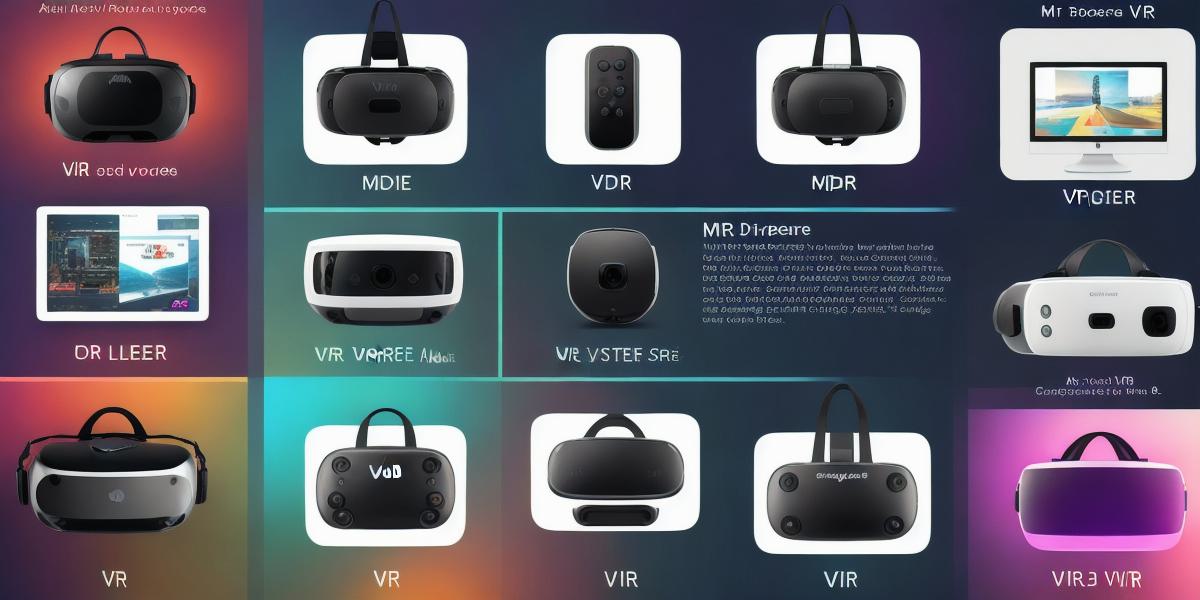Virtual Reality (VR), Augmented Reality (AR), and Mixed Reality (MR) are three emerging technologies that have the potential to revolutionize the way we interact with digital content. As a VR developer, it’s important to understand the differences between these technologies and how they can be used to create immersive and engaging experiences. In this article, we will explore the key features and use cases of VR, AR, and MR, and provide practical tips for developers looking to create compelling experiences in these environments.
Virtual Reality: A Complete Immersion
Virtual Reality is a technology that allows users to experience a simulated environment as if they were actually there. In a VR headset, users are presented with a 360-degree view of a virtual world, and sensors track their movements to create a seamless and immersive experience. VR has already found applications in gaming, education, training, and more, and its potential for further innovation is vast.
One of the key advantages of VR is its ability to provide a complete immersion. Users can fully engage with the virtual world, without any distractions or external factors affecting their experience. This makes VR ideal for applications where users need to be fully focused on the task at hand, such as surgical training or military simulations.
Augmented Reality: Enhancing the Real World
Augmented Reality is a technology that superimposes digital content onto the real world. AR apps use a camera to overlay virtual objects onto the user’s view of the physical environment, creating a seamless integration of digital and real-world elements. This technology has already found applications in retail, education, and entertainment, and its potential for further innovation is significant.
One of the key advantages of AR is its ability to enhance the user experience without disrupting it. By overlaying virtual content onto the real world, users can interact with both physical and digital elements in a natural and intuitive way. This makes AR ideal for applications where users need to access information or interact with digital content while still being fully present in the physical environment, such as museum guides or remote assistance apps.
Mixed Reality: The Best of Both Worlds
Mixed Reality is a technology that combines elements of both VR and AR to create a hybrid experience that blends virtual and real-world elements. MR apps use sensors and cameras to track the user’s movements and position, allowing them to interact with virtual objects in a physical environment. This technology has already found applications in gaming, education, and design, and its potential for further innovation is significant.
One of the key advantages of MR is its ability to provide a more natural and intuitive experience than VR or AR alone. By blending virtual and real-world elements, users can interact with digital content in a way that feels more realistic and immersive. This makes MR ideal for applications where users need to interact with digital content in a physical environment, such as remote collaboration tools or product design software.
Practical Tips for Developing VR, AR, and MR Experiences
As a VR developer, there are several practical tips you can follow to create compelling experiences in these environments:
- Understand your audience: Know what your users want and need from the experience, and design it with their needs in mind.
- Keep it simple: Avoid overwhelming users with too much information or too many options. Focus on creating a seamless and intuitive experience that is easy to use.
- Test and iterate: Continuously test your experiences and gather feedback from users to improve and refine them over time.
- Use real-world examples: Incorporate real-life examples and case studies into your experiences to make them more relatable and engaging.
- Embrace the power of storytelling: Use narrative and emotional storytelling to create a more immersive and engaging experience for users.
